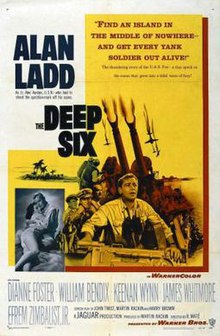불교평론(2023년 여름 94호)
만해사상실천선양회 저자(글)
불교시대사 · 2023년 05월 31일


불교평론(2022년 겨울호/92호)만해사상실천선양회
14,250원

불교평론(2023년 가을 95호)만해사상실천선양회
14,250원

불교평론(2023년 봄 93호)만해사상실천선양회
14,250원

불교평론(2022년 봄호)만해사상실천선양회
14,250원

불교평론(2021년 겨울호)만해사상실천선양회
14,250원

불교평론(2021 여름호)만해사상실천선양회
14,250원

생명의 삶(2023년 12월호)(개역개정판)두란노 편집부
4,750원

포브스 코리아(Forbes Korea)(2023년 12월호)중앙일보 편집부
16,150원

생명의삶(2023년 12월호)(우리말성경)두란노 편집부
4,750원

밀리터리 리뷰(2023년 12월호)군사연구 편집부
10,260원

더퍼포스 QT(2023년 12월호)더퍼포스 편집부
2,850원

포춘 코리아(2023년 12월 177호)HMG퍼블리싱 편집부
17,100원

기도수첩(Remnant)(2023년 12월호)생명 편집부
4,750원

월간 조선(2023년 12월호)조선뉴스프레스 편집부
13,300원

신동아(2023년 12월호)동아일보사 편집부
13,300원
책 소개
『불교평론』은 불교사상을 현대적 시각으로 해석하고 역사, 정치, 사회 현상을 불교적 시각에서 분석 비판 조명하는 계간지로 한국불교 지성을 대표하는 잡지입니다.
2024년 봄호는 특집으로 “함께 돌아봐야 할 소수자 인권”을 마련했습니다. 불교는 부처님이 가르침을 편 초기부터 사회적 약자에 대한 관심과 배려의 필요성을 끊임없이 환기해왔습니다. 난민과 이주민 노동자, 다문화가족은 물론 공익제보자와 성소수자에 이르기까지 다양한 분야에서 진정한 이웃으로 대접받지 못하고 차별과 소외에 시달리며 고통받는 삶을 벗어나지 못하는 이들에게 부처님의 자비가 구현되도록 하자는 취지에서 기획되었습니다. 이 특집을 통해 불교의 사회적 역할에 대한 적극적 실천의 필요성을 함께 생각해보고자 합니다. ‘사색과 성찰’은 불교적 소재나 주제로 각계각층의 필자가 참여하는 에세이 섹션으로 이번 여름호에서는 가톨릭 성직자 10분을 초대해 불교와 관련한 글을 실었습니다. 신부님들과 수녀님께서 들려주는 명상이 있는 진솔한 이야기들이 독자에게 울림을 줄 것으로 기대합니다. ‘논단’에서는 인공지능이 전 인류의 변혁을 주도하는 현실에서 불교계는 어떻게 대응할 것인지 생각해보는 보일 스님(해인사승가대학장)의 논문 “챗gpt의 등장과 불교계의 대응 방안”을 게재했습니다. ‘세계의 불교학자’에서는 신지학자로서 남아시아 불교를 중흥시킨 헨리 올코트와 대승불설비불설 논쟁에 대한 비판으로 유명한 일본 승려학자 후카우라 세분의 삶과 사상을 소개합니다. 이번 호 ‘불교소설’은 이상문학상과 동인문학상 등을 수상한 중견 소설가 구효서의 단편 “자시에 다리를 건너다”가 실렸습니다. 이상문학상, 동인문학상 등을 수상하며 우리 시대 대표 소설가로 자리 잡은 구효서의 신작 소설에서는 묵직하고 깊은 필체, 서정성과 탄탄한 주제 의식 속에 형상화된 불교적 정서를 엿볼 수 있습니다.
작가정보
저자(글) 만해사상실천선양회

불교평론(2023년 가을 95호)

불교평론(2022년 겨울호/92호)

유심작품상(2017)

만해 한용운 시전집(양장본 Hardcover)
목차
[불교평론(2023년 여름 94호) 목차]
권두언
002 소수자 인권 문제를 챙겨야 한다 / 이혜숙
특집: 함께 돌아봐야 할 소수자 인권
008 소수자 차별의식 극복을 위한 학교교육 / 박병기
029 우리 곁의 이웃, 우리 곁의 난민 / 이현수
045 이주민과 다문화가족 문제의 불교적 대응 / 진오
066 초기불교, 성소수자를 품다 /효록
086 공익제보자를 위한 불교시민사회 역할 / 김형남
사색과 성찰
106 내가 만난 반야심경 / 이상윤
109 신비와 더불어 살아가기 / 이현숙
113 “돈오돈수를 아십니까?” / 김동희
116 삶의 의미를 찾는 길 / 윤진
119 관상(觀想)의 정신을 가다듬으며 / 박동호
122 어떤 깨달음 / 소희숙
125 사회통합을 어떻게 이룰꼬? / 곽용승
129 푸른 하늘은 누구의 얼굴입니까 / 박정은
132 메룰라나 31번가의 기적 / 권오상
137 신부의 가족은 종교다원주의? / 최영균
내 마음의 시
140 가을 직지사 / 신달자 141 토끼풀 / 조기호 142 귀 / 이우걸 143 들러리 / 이기라 144 먼 사랑 / 김일연 145 기청제(祈晴祭) / 주경림 146 그날의 오줌 소리 / 이종문
147 모과 / 김용화 148 빙하 / 최영규 149 하루를 산다면 / 김원옥 150 부부 / 최난경 151 들풀로 살아가기 / 홍사성
문화시평
152 정찬주 《아소까대왕》 -부처님 가르침 세계화한 전륜성왕 이야기 / 윤재웅
나의 삶 나의 불교
158 금강경 독송으로 삶의 지혜를 얻다 / 정천구
논단
175 챗GPT의 등장과 불교계의 대응 방안 / 보일
194 불교에 대한 신뢰도 갈수록 하락 / 이명호
불교로 읽는 고전
216 몽테스키외 《법의 정신》 / 연기영
세계의 불교학자
231 헨리 스틸 올코트-남아시아불교 중흥 선도한 실천불교학자 / 김용표
248 후카우라 세분-불교문화 연구의 중요성 강조한 승려 학자 / 김치온
세미나 중계
264 한국 재가불교운동의 현황과 문제 / 이병두
북리뷰
283 조병활 지음 《조론연구, 조론오가해》 / 김진무
289 석도성 저, 김순미 역주 《석씨요람 역주》 / 엄원대
295 이찬수 지음 《메이지의 그늘》 / 이명권
300 손연칠 · 손문일 지음 《불교미술의 시대정신》 / 이기선
불교소설
306 자시에 다리를 건너다 / 구효서
접기
기본정보
ISSN 19760981
발행(출시)일자 2023년 05월 31일
쪽수 328쪽
총권수 1권





